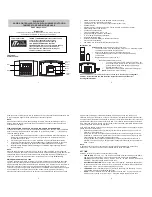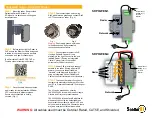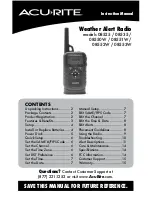
DISPLAYS
The display shows current operating information including Group,
System, or Channel. It also shows when the radio is in emergency op-
eration and shows different status flags. An example of the display is
shown below with all the status flags displayed. When you are using the
radio, only the active performance indicators and characters will show.
When the radio is turned on, the display will show the system and group
selection.
TX
Transmit status flag. This status flag is on when the radio is
transmitting.
BSY
Channel busy status flag. This status flag is on when the radio
receives a call or when a conventional channel is in use.
NC
No control channel status flag. This status flag is on when the
control channel is not available (out of range or not operating).
On supervisory units, the flag flashes when site equipment is
in failsoft.
CNV
Conventional system status flag. This status flag is on when
operating on a conventional system.
EMER Emergency status flag. Displayed when the external emer-
gency switch (optional) is activated and when an emergency
call is received.
CALL
Flashes when programmed calls are received.
SPC
Special call status flag. Displayed when an individual call is
received or a special call is selected.
4
OPERATING TIPS
•
Remember to wait for the beep before speaking when transmit-
ting.
The following conditions tend to reduce the effective range of two-
way radios and should be avoided whenever possible.
•
Operating the radio in low areas of the terrain, or while under
power lines or bridges.
•
Obstructions such as mountains or buildings between the re-
peater site and the individual receiving the message.
Moving in another direction (towards the strongest signal), or mov-
ing to a higher elevation, may also improve communication.
13


































